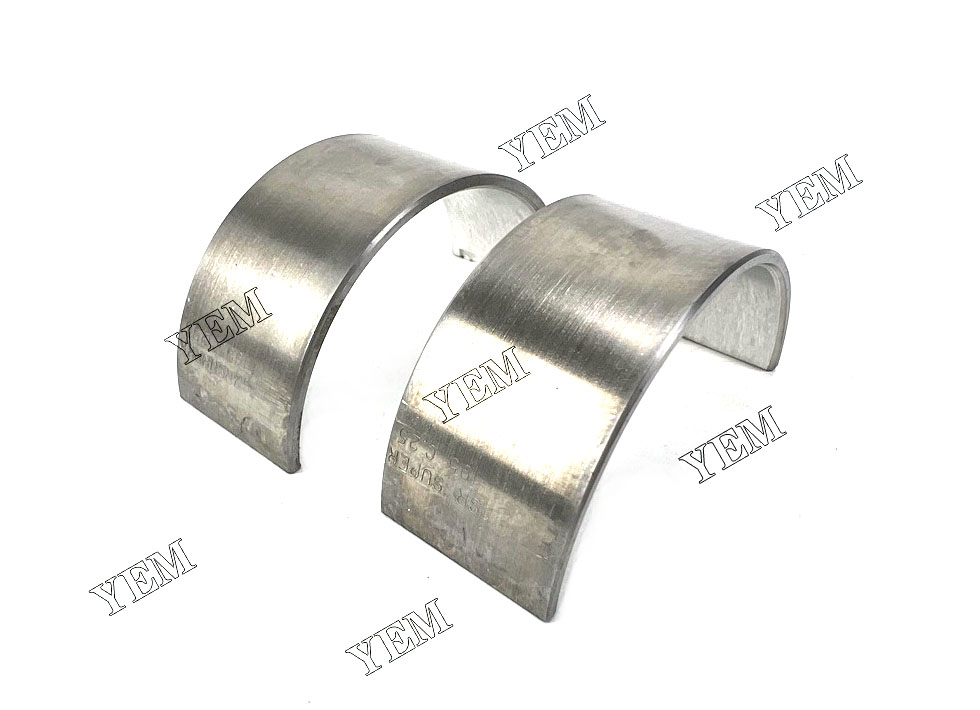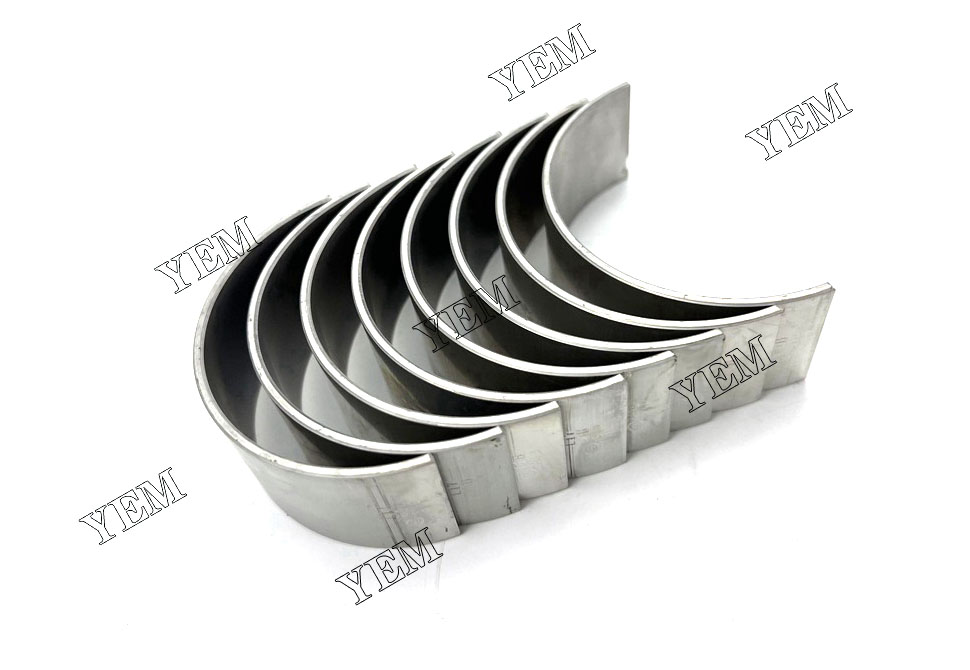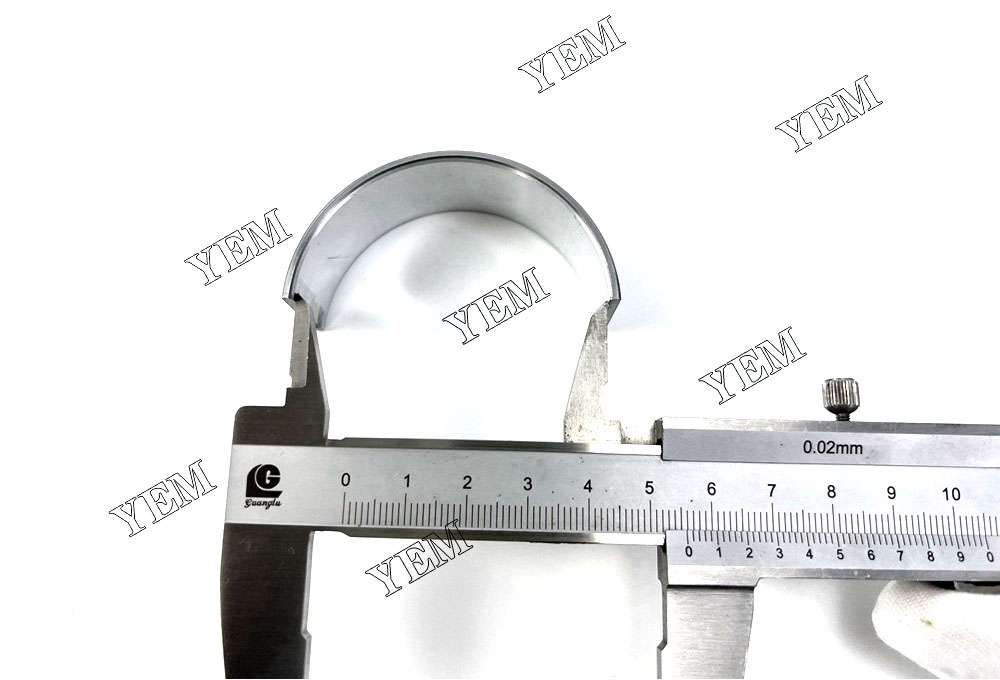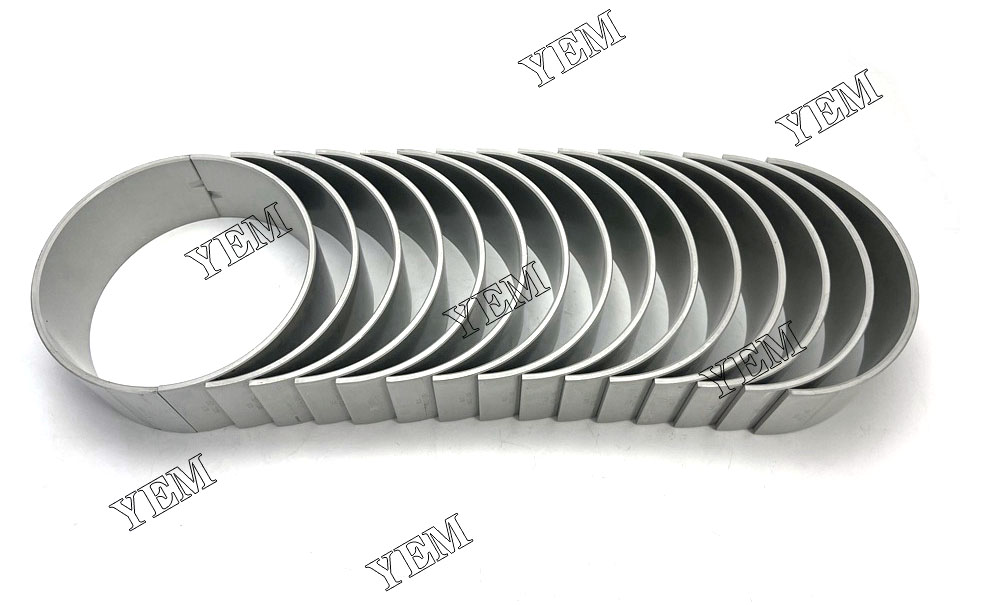What are engine connecting rods and their role in the engine
Engine connecting rods, also known as conrods, are vital components in an internal combustion engine. They play a crucial role in the engine’s operation by connecting the piston and the crankshaft.
The connecting rod transfers the reciprocating motion of the piston to the rotating motion of the crankshaft, converting linear motion into rotational motion. It is responsible for maintaining the synchronized movement between the piston and the crankshaft, ensuring the proper timing and smooth operation of the engine.
Connecting rods are typically made of strong and lightweight materials such as steel or aluminum alloy. They need to withstand high stresses, as they experience both compressive and tensile forces during engine operation. Therefore, they are designed to be rigid and durable.
In addition to transmitting motion, connecting rods also provide support and stability to the engine’s moving parts. They help to maintain proper alignment between the piston and the crankshaft, preventing excessive vibrations and minimizing wear between these components.
Overall, connecting rods are essential for the efficient and reliable functioning of an internal combustion engine, allowing the conversion of fuel energy into mechanical power.

The stress and wear that connecting rod bushes experience during engine use, and the problems this can cause
Connecting rod bearings, also known as connecting rod bushings, experience significant stress and wear during engine operation. The rotating motion of the crankshaft and the reciprocating motion of the piston transmit forces to the connecting rod bearings, resulting in several potential issues:
- High-pressure loads: Connecting rod bearings endure high-pressure loads due to the combustion process. The force and pressure generated by the expanding gases push the piston downwards, transmitting significant forces to the connecting rod bearings. This can lead to excessive stress and wear on the bearings.
- Lubrication issues: Proper lubrication is crucial for reducing friction and wear between the connecting rod bearings and the crankshaft. Inadequate lubrication, such as insufficient oil supply or oil contamination, can cause increased friction and heat generation, leading to accelerated wear and potential bearing failure.
- Wear and clearance: Over time, the repeated cycles of high-stress loads and friction can cause wear on the connecting rod bearings. Excessive wear can result in increased clearances between the bearing and the crankshaft journal, leading to decreased bearing performance, increased noise, and potential engine damage.
- Knocking or knocking noise: Excessive wear or damage to the connecting rod bearings can result in knocking or knocking noises from the engine. This knocking noise is often caused by the increased clearance between the bearing and the crankshaft, which leads to unwanted movement and vibration of the connecting rod.
- Loss of oil pressure: If the connecting rod bearings wear excessively, it can lead to oil leakage and a loss of oil pressure in the engine. Insufficient oil pressure can cause further damage to the engine components, including the bearings themselves, the crankshaft, and the piston.
The components of the connecting rod shoe, such as upper and lower grooves, and their functions
The connecting rod bearing, also known as the connecting rod shoe, is a crucial component in the engine’s connecting rod assembly. It consists of several elements, including upper and lower grooves, that serve specific functions:
- Upper Groove: The upper groove on the connecting rod bearing serves as a channel for oil circulation. It allows oil to flow from the engine’s lubrication system into the space between the bearing and the crankshaft journal. This oil forms a thin film that minimizes friction and wear between the bearing and the crankshaft, ensuring smooth operation.
- Lower Groove: The lower groove on the connecting rod bearing is designed to provide additional oil supply to the bearing. It enhances lubrication and cooling by allowing more oil to reach the bearing surface, reducing friction and dissipating heat generated by the operation of the engine.
- Oil Hole: The connecting rod bearing may also have an oil hole located near the upper or lower groove. This hole serves as a passage for oil to enter and exit the bearing, optimizing lubrication and facilitating the cooling process. The oil hole aligns with corresponding holes in the connecting rod and crankshaft, ensuring continuous oil flow to the bearing.

The overall function of the upper and lower grooves, along with the oil hole, is to maintain proper lubrication, cooling, and the formation of an oil film between the connecting rod bearing and the crankshaft. This reduces friction, dissipates heat, and minimizes wear, preventing damage and ensuring the smooth and efficient operation of the engine.
It is important to note that the specific design and features of the connecting rod bearing, including the presence and location of grooves and oil holes, may vary depending on the engine type and manufacturer. It is always recommended to consult the engine’s technical documentation for precise information about the connecting rod bearing design and its functions in a particular engine.
How to regularly inspect and replace connecting rod bushings to ensure engine performance and reliability
Regular inspection and replacement of connecting rod bushings is crucial for maintaining engine performance and reliability. Here is a general guideline for the process:
- Consult Manufacturer’s Guidelines: Before performing any inspection or replacement, refer to the manufacturer’s guidelines or service manual specific to your engine model. This will provide accurate information regarding the recommended inspection intervals, procedures, and specifications.
- Preparation: Ensure you have the necessary tools, safety equipment, and replacement parts before starting the inspection or replacement process.
- Inspection: Start by removing the connecting rod assembly from the engine. Inspect the connecting rod bushings for signs of wear, damage, or excessive clearance. Look for indications such as scoring, discoloration, excessive play, or visible material loss. Use a micrometer or a suitable measuring device to measure the internal diameter of the bushing and compare it to the manufacturer’s specifications. If the bushings are worn beyond the specified limits or show signs of damage, replacement is necessary.
- Removal: To replace the connecting rod bushings, use appropriate tools to carefully remove the old bushings. The specific removal method may vary depending on the engine design and the type of bushings used. In some cases, a hydraulic press or a special bushing removal tool may be required.
- Cleaning: Thoroughly clean the connecting rod and its housing to remove any debris or contaminants that may affect the new bushing’s installation or performance. Ensure the surfaces are dry and free from any oil or grease.
- Installation: Carefully install the new connecting rod bushings using a suitable installation tool or method recommended by the manufacturer. Follow the specified procedures, including applying the correct lubricant or assembly compound according to the manufacturer’s instructions.
- Reassembly: Reinstall the connecting rod assembly back into the engine, making sure all components are properly aligned and torqued to the manufacturer’s specifications. Follow the recommended torque settings and tightening sequence for the connecting rod bolts.
- Lubrication: After reassembly, ensure proper lubrication to the connecting rod bearings by following the manufacturer’s recommendations. This may include priming the oil pump, pre-lubricating the bearings, or performing other specified procedures.
- Testing: Once the connecting rod bushings are replaced, it is advisable to perform an engine start-up and monitor for any abnormal noises, vibrations, or oil pressure issues. Conduct a thorough inspection of the engine to ensure everything is functioning correctly.
It is essential to note that connecting rod bushing replacement may require advanced mechanical skills and expertise. If you are not confident in performing the inspection and replacement yourself, it is recommended to seek professional assistance from a qualified mechanic or engine specialist to ensure the job is done correctly and safely.

Some common issues that can cause a connecting rod shoe to fail, such as impact or heat damage
There are several common issues that can cause a connecting rod shoe to fail, including impact damage and heat damage. Here are some possible causes:
- Impact damage: If the engine experiences a sudden impact or excessive vibration, it can cause the connecting rod shoe to crack or break. This can occur due to a mechanical failure, such as a loose or misaligned connecting rod, or due to an external force exerted on the engine.
- Heat damage: Connecting rod shoes operate under high temperatures generated by the combustion process. Excessive heat can cause the shoe material to weaken, leading to failure. This can happen due to inadequate lubrication, insufficient cooling, or running the engine at high RPMs for an extended period.
- Insufficient lubrication: The connecting rod shoe requires proper lubrication to reduce friction and wear. If there is insufficient lubrication, either due to a lack of oil or oil starvation, the shoe can suffer excessive wear and eventually fail.
- Fatigue failure: Over time, the repeated stresses and strains on the connecting rod shoe can lead to fatigue failure. This can occur due to inadequate design, material defects, or prolonged operation in harsh conditions.
- Incorrect installation or assembly: If the connecting rod shoe is not installed or assembled correctly, it may not be able to withstand the forces and stresses during engine operation. This can result in premature failure.
It’s important to note that these are just some common issues, and the actual cause of connecting rod shoe failure can vary depending on the specific circumstances and engine design. If you suspect a problem with your engine, it’s best to consult a qualified mechanic or engine specialist for a proper diagnosis and repair.
Connecting rod shoe material selection, and other measures manufacturers take to improve connecting rod shoe quality and performance
Manufacturers take several measures to improve the quality and performance of connecting rod shoes. This includes material selection, design improvements, and quality control processes. Here are some key factors manufacturers consider:
- Material selection: Connecting rod shoes are typically made of high-strength alloys, such as steel or aluminum. Material selection depends on factors like engine type, operating conditions, and desired performance characteristics. Manufacturers choose materials that offer good tensile strength, fatigue resistance, and thermal stability.
- Lubrication and cooling: Adequate lubrication is crucial for connecting rod shoe performance. Manufacturers design the engine oiling system to ensure proper oil flow and distribution to the shoe and other engine components. Oil passages within the connecting rod help deliver lubricant to the shoe surfaces. Additionally, some engines incorporate oil cooling techniques, like oil jets, to manage heat buildup and maintain proper operating temperatures.
- Manufacturing and machining processes: Precision manufacturing and machining processes are essential to ensure accurate dimensions and surface finishes of the connecting rod shoe. This helps to minimize stress concentrations and improve load distribution. Manufacturers employ techniques like CNC machining and quality control measures to ensure consistent and high-quality production.
- Design improvements: Manufacturers continuously work on optimizing the design of connecting rod shoes. They consider factors like weight reduction, improved load-carrying capacity, and enhanced durability. Advanced design techniques, such as finite element analysis (FEA), are used to simulate and analyze different loading scenarios, stress distribution, and potential failure modes.
- Quality control: To maintain high-quality standards, manufacturers implement rigorous quality control measures. This includes inspection and testing of raw materials, dimensional verification during production, and non-destructive testing techniques like ultrasound or magnetic particle inspection. These measures help identify any defects or deviations that could compromise the connecting rod shoe’s performance.

It’s important to note that different manufacturers may have their own proprietary techniques and technologies to enhance connecting rod shoe quality. Additionally, advancements in materials science and manufacturing processes continue to drive improvements in connecting rod shoe performance.
Contact us
YEM Professional Excavator Parts Team is a dedicated and experienced team that specializes in providing high-quality parts for excavators. With our extensive knowledge and expertise in this field, we offer a comprehensive range of parts to meet the diverse needs of our customers.
Whether you require replacement parts for hydraulic systems, engine components, chassis components, or any other excavator component, the YEM team has got you covered. We source our products from reputable manufacturers and ensure that each part meets the highest standards of quality and durability.
What sets us apart is our commitment to exceptional customer service. We understand the importance of timely support and strive to promptly respond to inquiries and requests. Our knowledgeable staff is readily available to help customers identify the correct parts for their specific excavator model and provide installation and maintenance instructions.
To contact the YEM Specialized Excavator Parts team, you can reach us through our website, email, or phone. We are dedicated to building long-term relationships with our customers and are eager to assist you with all your excavator parts needs.
